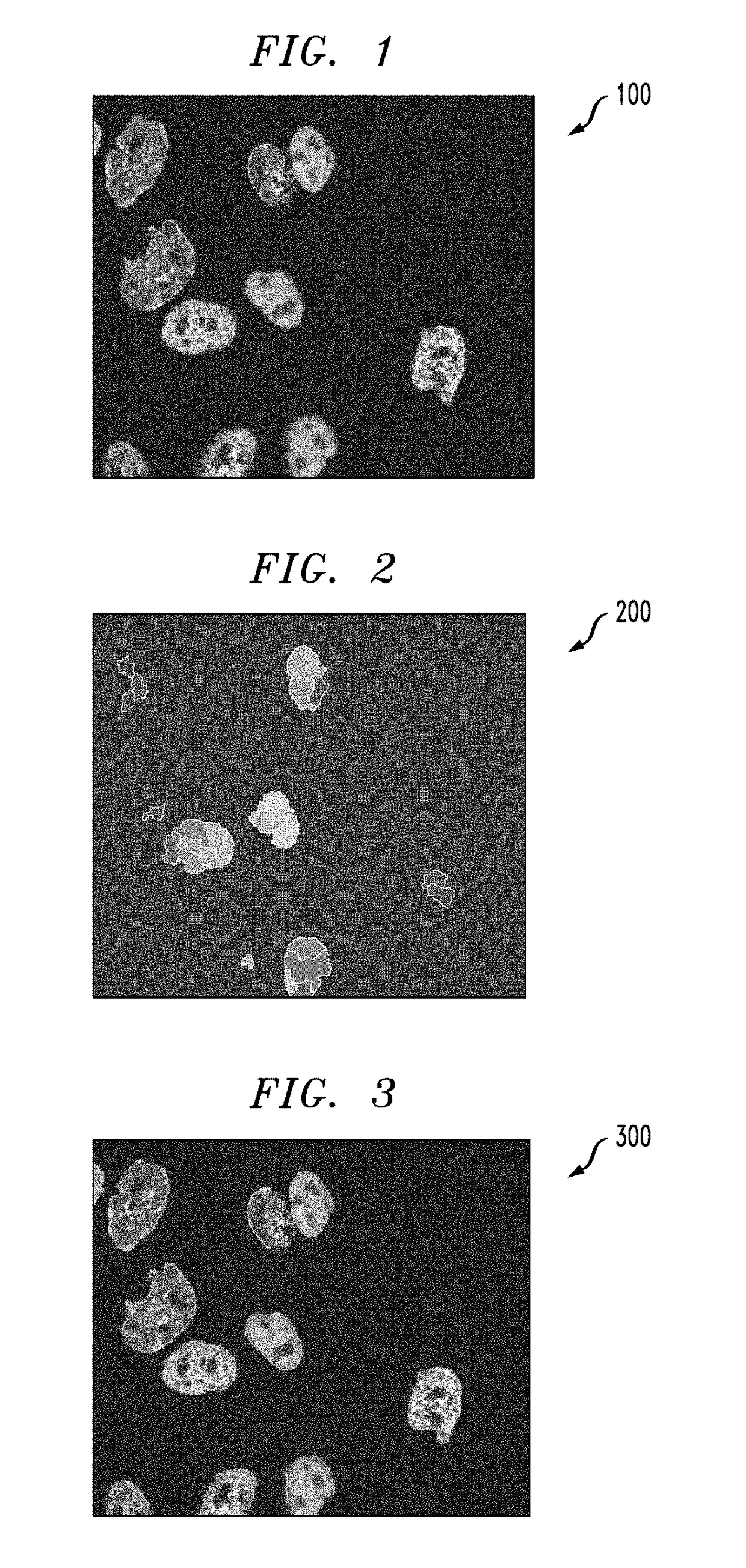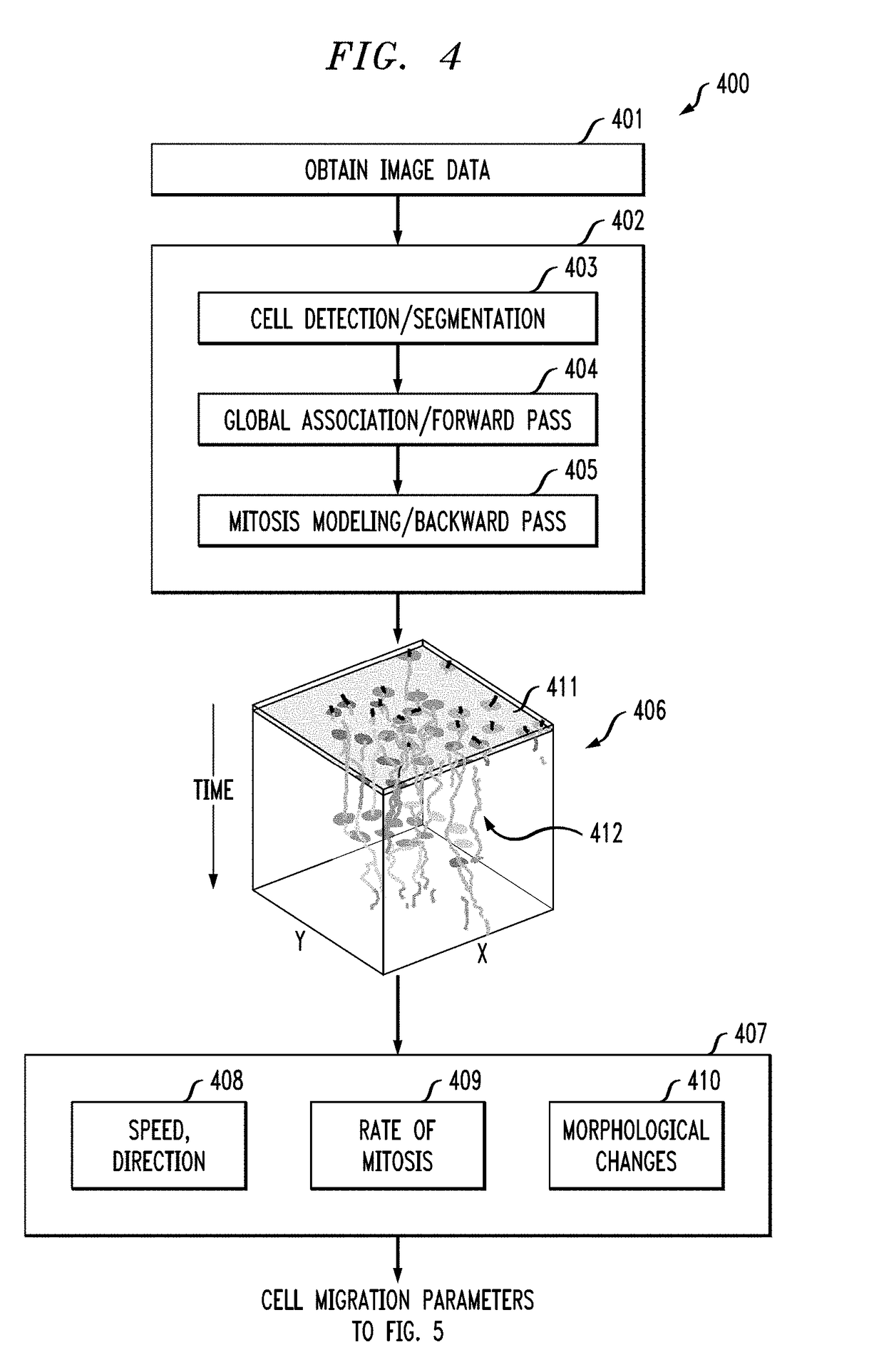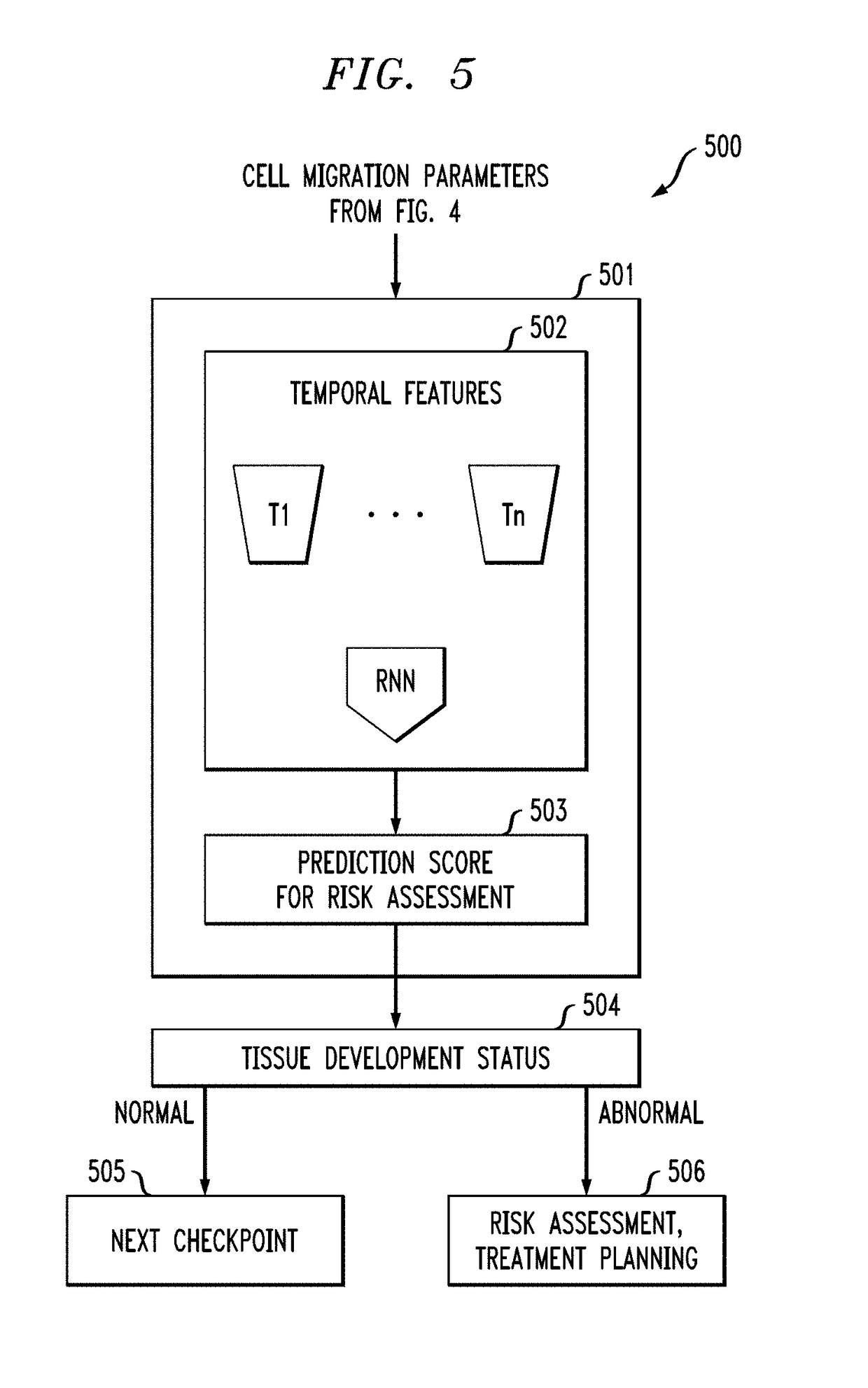Searching trees: live time-lapse cell-cycle progression modeling and analysis
a tree and cell cycle technology, applied in the field of time-lapse cell cycle progression modeling and analysis, can solve the problems of hampered ability to track cells over time, inability to track cells over longer time periods or when, and body is not known, so as to facilitate an action, facilitate an action, and facilitate the effect of the action
- Summary
- Abstract
- Description
- Claims
- Application Information
AI Technical Summary
Benefits of technology
Problems solved by technology
Method used
Image
Examples
Embodiment Construction
[0019]According to an exemplary embodiment of the present invention, a model of temporal cell behavior is trained and used in performing an atomic risk assessment. The model is applicable to predict a critical point, a time when the cell behavior will be risky, enabling improved decision making in a patient's treatment plan.
[0020]Tracking multiple cells in time-lapse microscopy images (hereinafter, image data) is a challenging task. For example, cells tend to change appearance and location, similar nearby cells need to be tracked to avoid misapprehension, and many cells are prone to missed detection or occlusion. For example, given an input image (see FIG. 1, 100), a typical segmentation method such as a watershed segmentation method results in a segmentation result that may exhibit a misidentification problem (see FIG. 2, 200) when compared to a ground truth (see FIG. 3, 300).
[0021]Cell image analysis methods typically assume that the appearance of a cell does not change over time,...
PUM
 Login to View More
Login to View More Abstract
Description
Claims
Application Information
 Login to View More
Login to View More - R&D
- Intellectual Property
- Life Sciences
- Materials
- Tech Scout
- Unparalleled Data Quality
- Higher Quality Content
- 60% Fewer Hallucinations
Browse by: Latest US Patents, China's latest patents, Technical Efficacy Thesaurus, Application Domain, Technology Topic, Popular Technical Reports.
© 2025 PatSnap. All rights reserved.Legal|Privacy policy|Modern Slavery Act Transparency Statement|Sitemap|About US| Contact US: help@patsnap.com



